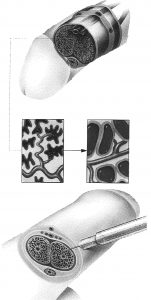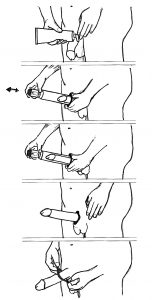Book a consultatation with one of our highly experienced doctors. They will be able to give you an accurate diagnosis.
The typical symptoms of painful erections and curvature, angulation or deformity of the shaft are usually enough for a doctor to suspect that you have the disease. The bend or distortion of the penis whilst it is erect, will be measured.
There are many non-surgical treatments available for Peyronie’s disease but research has so far failed to prove that they are guaranteed to work in all people.
Surgery is the only treatment guaranteed to have a beneficial effect on Peyronie’s disease. However, it would only be offered to you once the changes caused by the condition had settled down. This normally takes 12-18 months. Surgery is not without risks and can include shortening of the penis and a chance that the distortion will return. If your foreskin is already tight, you may need a circumcision to prevent it becoming even tighter after the operation. Some people can feel knots or stitches under the skin. You should consider all these issues carefully before consenting to surgery.


